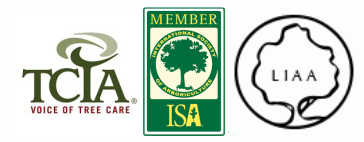Pruning helps a tree maintain its strength and shape by removing dead, broken and diseased branches that can be unsightly and make it more difficult for the tree to stay healthy. Being proactive and trimming your trees will also help to reduce expensive and unexpected emergency calls in the future.
People prune trees for many reasons some include:
- Removal of dead limbs
- To improve tree form
- To improve tree appearance
- To reduce risk
- To increase light and air penetration in the trees crown
- To reduce shade to the landscape below
- To provide clearance for structures, transportation and utilities
Types of Pruning
- Cleaning- selective pruning to remove dead, diseased, broken branches
- Thinning- selective pruning to reduce density of live branches
- Raising- selective pruning to provide vertical clearance
- Reduction- selective pruning to reduce height and/or spread
- Structural- selective pruning to develop and maintain stable trees
- Vista- selective pruning to allow a specific view
Each tree species has a preference as to how often and during what season it should be pruned. The amount of live tissue that should be removed depends on the trees size, species, age, as well as pruning objectives. Younger trees tend to tolerate the removal of a higher percentage of living tissue better than mature trees do. Generally no more than 25% of the crown should be removed at once, less for mature trees. Care should be taken to achieve pruning objectives while minimizing live branch loss and wound size. Improper pruning can cause more damage than just leaving a tree alone, that is why you want to hire a professional for all your pruning needs.
Climbing spikes are sharpened steel spikes attached to the climber’s leg by padded straps. A knowledgeable tree worker would only use them to access trees being removed. When these spikes are used on living trees it creates unnecessary damage.
Each puncture from a climbing spike produces a certain amount of tree tissue death; the amount of damage varies from tree to tree. In most cases, isolated wounds will seal, but never heal; groupings of spike holes can cause the entire area on the trunk to die. This happens when a tree is repeatedly climbed while using spikes.
At Kiel’s Tree Care we are aware of the dangers of pruning with climbing spikes and always use proper tree equipment such as ropes and climbing harnesses to climb trees. This with our training and experiences contributes to the future health of your tree.
Our techniques comply with published industry standards (American National Standard Institute ANSI A300 Standards.)


